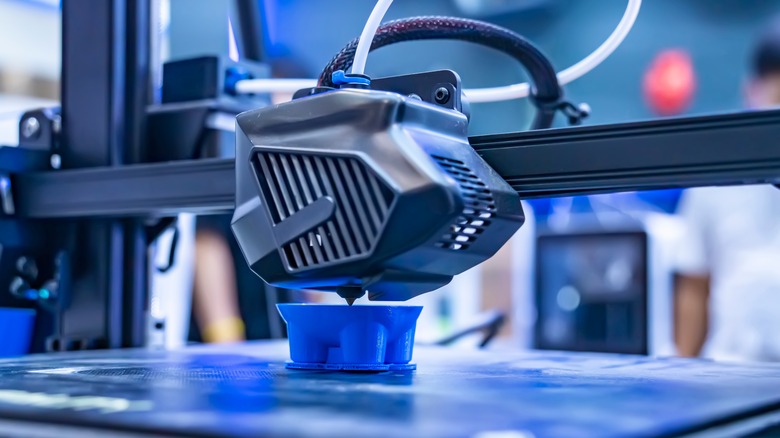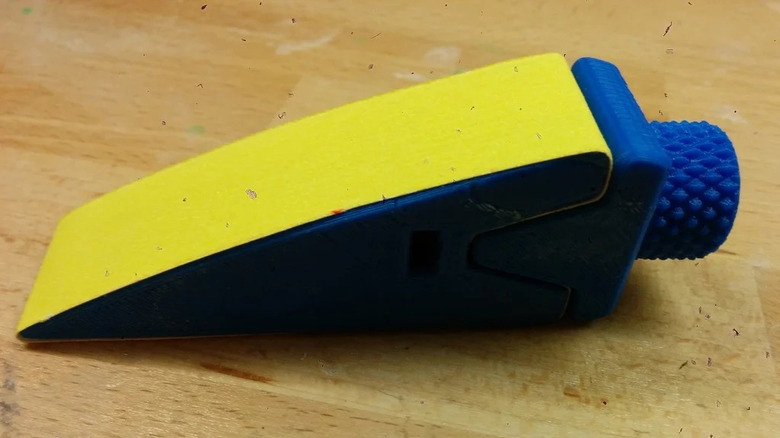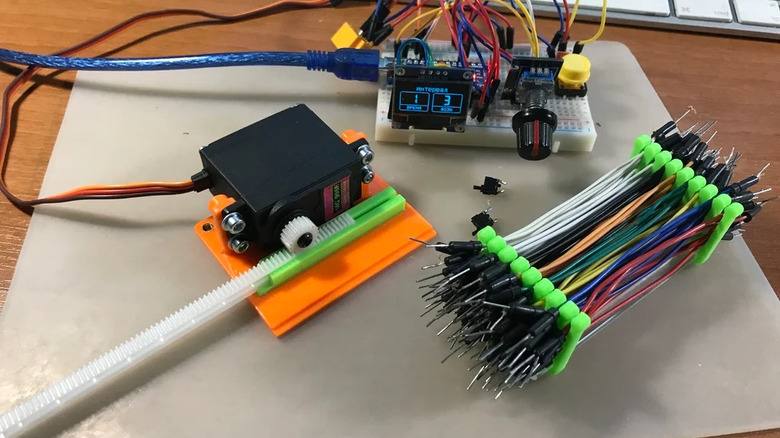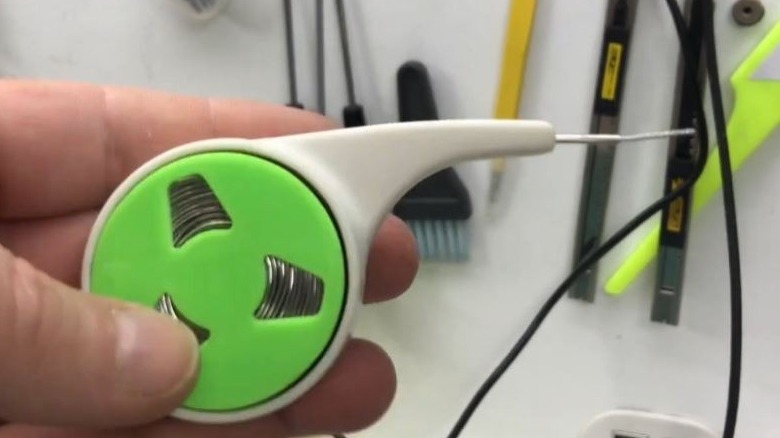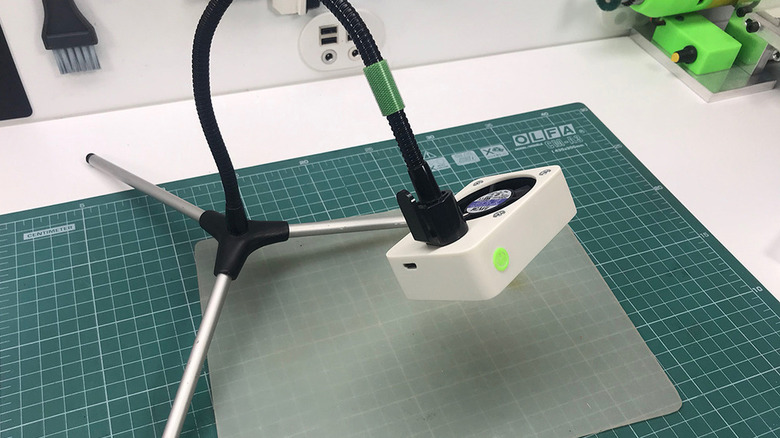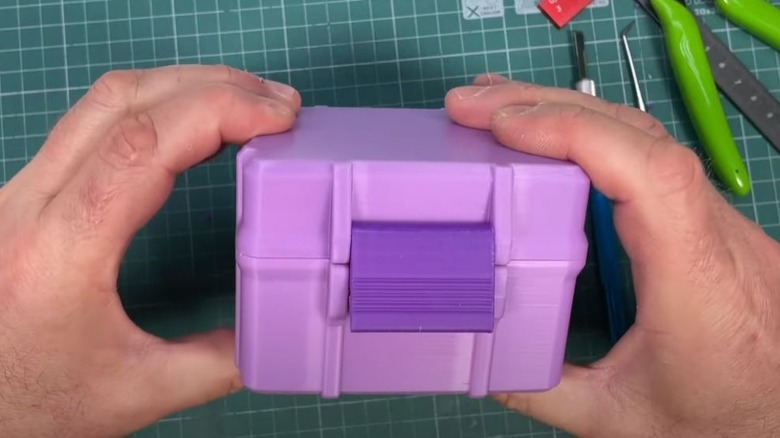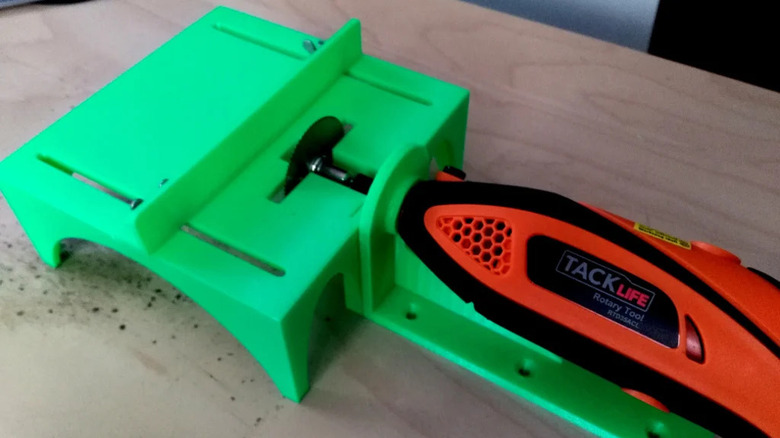6 Power Tool Accessories You Can 3D Print At Home
3D printers have unfortunately yet to reach the stage of full-on "Star Trek" replicators; they can't make complicated machinery from scratch, merely individual plastic parts, which aren't really safe to use for heavy-duty power tools anyway. But while you can't make a full rotary tool or soldering iron by just loading up a recipe in your 3D printer and letting it bake, you can make some helpful doodads to aid your home handiwork pursuits.
Using a 3D printer and the right model files, you can create a variety of small-scale accessories for your workshop, including small and circumstantial tools, storage options, little labor savers, and more. Not only is this a cool thing to do in general, but it saves you the trip to the hardware store to look for some hyper-specific accessory and the money to pay for it. It just takes a bit of plastic filament, a few simple components, and some elbow grease.
Wedge sanding tool
When you're creating something out of a flexible material like wood, you sometimes need to employ a sanding tool to smooth out the hard edges and ensure a consistent pattern. However, if you're working with something small and delicate or with narrow compartments, the traditional means of sanding might not work. You can't put something delicate on a giant belt sander, and a standalone strip of sandpaper won't give you the leverage you need.
In such a situation, try 3D printing a wedge sanding tool. This simple wedge-shaped tool can be created with little additional modification beyond a single bolt and a strip of kids' craft sandpaper, which you can get at a local craft store for a dollar. The thin yet sturdy edge gives you both precision and leverage for sanding in small and confined spaces, and the textured grip ensures it won't slip out of your fingers.
Wire organizer
Working with wires can be a bit of a headache. Whether you're soldering wires into place for an electrical project or just tying them together for some other kind of creation, different wires need to go in different places. If you leave all of the wires you need in some random pile on your workshop table, odds are good you'll never find the length you need when you actually need it.
To prevent your workshop table from devolving into chaos, try a 3D-printed wire organizer. This soft set of racks, connected by a simple acrylic tube, cradles your various wire lengths in soft and secure comfort, on full and clear display to eliminate confusion. Whenever you need to grab a wire from the organizer, you can just pull it right out without disturbing any of the other wires around it. This can be invaluable for electronics projects, as the last thing you need is wires falling everywhere while you're trying to concentrate.
Soldering wire dispenser
When you're soldering wires and electrodes together, you need to use a dedicated spool of soldering wire to actually connect everything. Holding up an individual piece of soldering wire while using the iron isn't very safe, especially as it gradually burns down, which is why it's best to use a wire dispenser. Wire dispensers can be a bit on the bulky side, though, which is annoying if you're trying to keep clutter down.
For a good middle point between convenience and compact design, try 3D printing your own soldering wire dispenser. Rather than the usual fishing line-like design, this dispenser condenses the wire into a lollipop-like swirl, then gradually feeds it out through a small opening. You can attach a magnet to the inside of the dispenser to keep the wire in place, and it's small enough to keep in an ordinary toolbox alongside your other tools.
Solder smoke extractor
Compared to something like a blowtorch, a soldering iron doesn't produce nearly as many dangerous fumes, but that doesn't mean it doesn't produce any. After all, you're still working with superheated metals, which can release dangerous and irritating fumes and smoke. This is why it's generally recommended you wear a mask and goggles while performing soldering work.
If you're still concerned about your health while soldering, though, there's a little gadget you can 3D print to improve your workshop conditions a bit: a solder smoke extractor. This pint-sized cooling fan can be loaded up with an activated carbon filter to suck in and capture the smoke from your soldering work. Just place it nearby or suspend it from a hook and watch the smoke fly away. Used in conjunction with the proper safety measures, this extractor will all but ensure that soldering fumes get nowhere near you.
Custom 3D storage boxes
Toolboxes and storage chests are the hallmarks of any proper handyperson for a reason: they allow us to keep all of our tools, materials, and accessories in a single, clearly defined place. The only real downsides to a professional-grade toolbox are that they may be a little bit too big for your needs and can be surprisingly expensive. If, for example, you only need a single small box to store a couple of things, it may be more economical to just make one yourself.
Luckily, not only is it very possible to 3D print a locking storage box from scratch, but you can even tweak the size based on your needs. With just a few tweaks to the length, height, and depth, you can create a box of just about any size and shape. While a simple plastic box might not be as sturdy as a professional-grade box, they're great for storing small, simple objects and tools or even keeping them organized within an existing larger toolbox.
Rotary tool sawing table
A handheld rotary tool is a great way to quickly cut through crafting materials, especially compared to a knife or a pocket saw. However, the accuracy of a rotary tool is highly dependent on both your eye for detail and the steadiness of your hands. If you're not getting the precision results you want out of a rotary tool by itself, try transforming it into a miniature table saw.
By 3D printing a rotary tool table, you can create a bite-sized stationary edge for your workshop table. Just feed materials into the blade, and it'll create perfectly straight cuts, just like a full-sized table saw. Just remember that, as with a full-sized table saw, cutting things like this necessitates an abundance of caution and protection, lest your fingers get intimately acquainted with the blade. Make sure you have protective gloves on, and consider using small pushing sticks to feed materials in rather than just your fingers.
